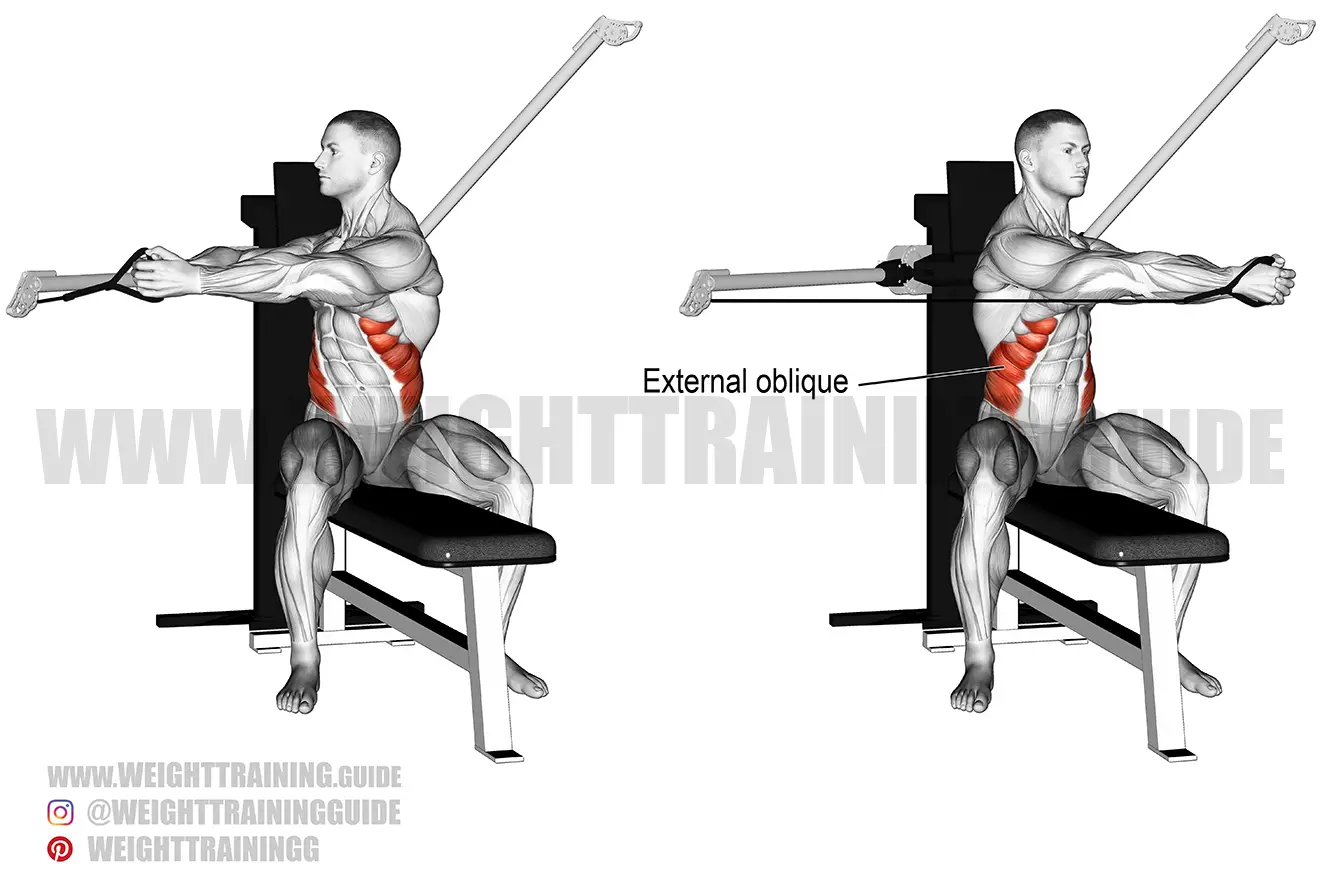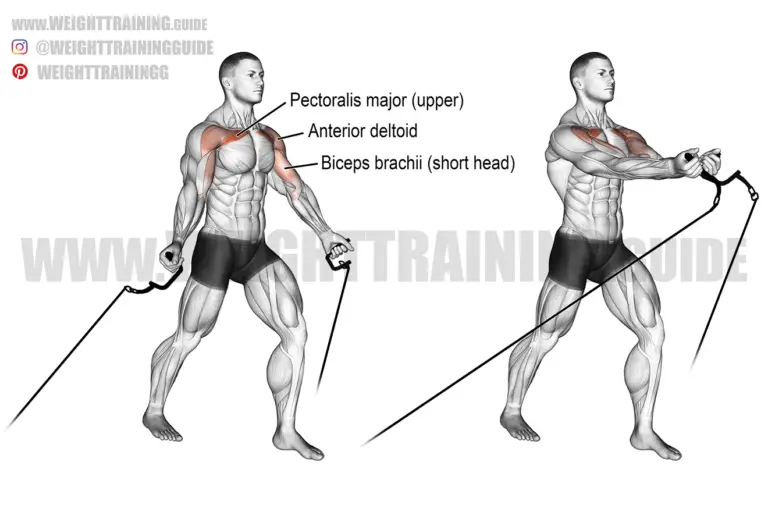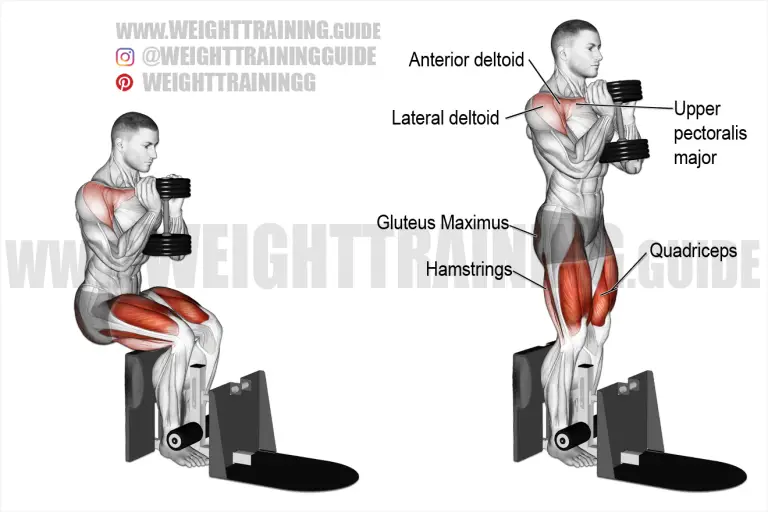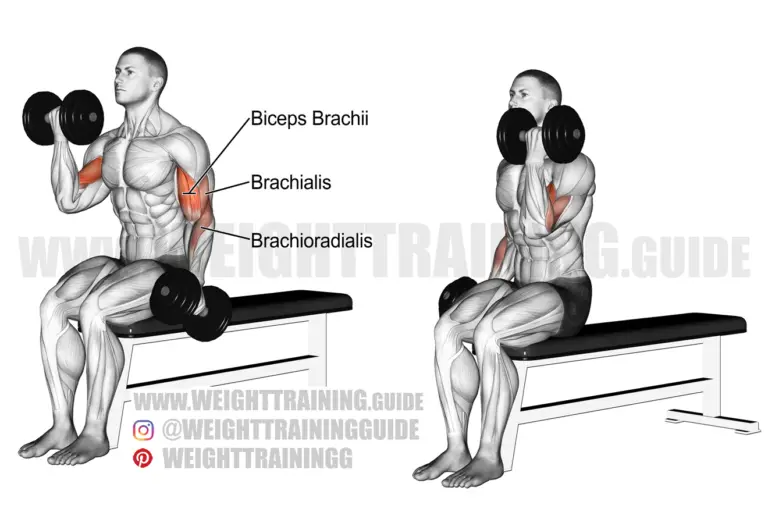Seated cable twist
Exercise details
- Target muscles: Internal and External Obliques
- Synergists: Psoas Major, Quadratus Lumborum, Iliocastalis Lumborum, Iliocastalis Thoracis
- Mechanics: Isolation
- Force: Pull
Starting position
- Place a bench to the side of a cable pulley.
- Set the pulley to seated shoulder height.
- Straddle the bench, with your feet flat on the floor.
- Twist your torso and grasp the stirrup with both hands.
- Straighten your torso and arms. Your arms should be parallel with the floor and the cable should be pulled taut.
Execution
- Keeping your torso and arms straight, exhale as you slowly rotate your torso to the opposite side.
- Hold for a count of two.
- Inhale as you reverse the motion and return to the starting position.
- Repeat for the prescribed number of repetitions.
- Repeat the exercise with your opposite side.
Comments and tips
- Use the seated cable twist to strengthen and stabilize your core, and to strengthen the twisting movement pattern of your torso.
- The point of sitting down for this exercise is to isolate the rotation of your torso.
- Keep your torso and arms straight and the movement under control.
- Keep your arms still; all of the movement should be in your torso.
- Make sure to get a full range of motion, twisting from one side all the way to the other side, and then back again.
- Ensure the cable is taut throughout the movement. You can achieve this by adjusting the position of the bench.
- Squeeze the bench with your legs for stability.
- Instead of sitting on a bench, you can sit on a stability ball, which will make the exercise more difficult and enforce the recruitment of more stabilizer muscles. However, you will not be able to lift as much weight.
- While performing the seated cable twist, it’s a good idea to stop halfway through some reps, hold, and try to resist the rotational force for 5 to 10 seconds, before continuing. This will isometrically strengthen your core and improve core stability.
- The seated cable twist is also known as the seated oblique twist.
- See also the cable twist and the cable wood chop.
Seated cable twist video
Here’s a demonstration of the seated cable twist as performed on a stability ball.







